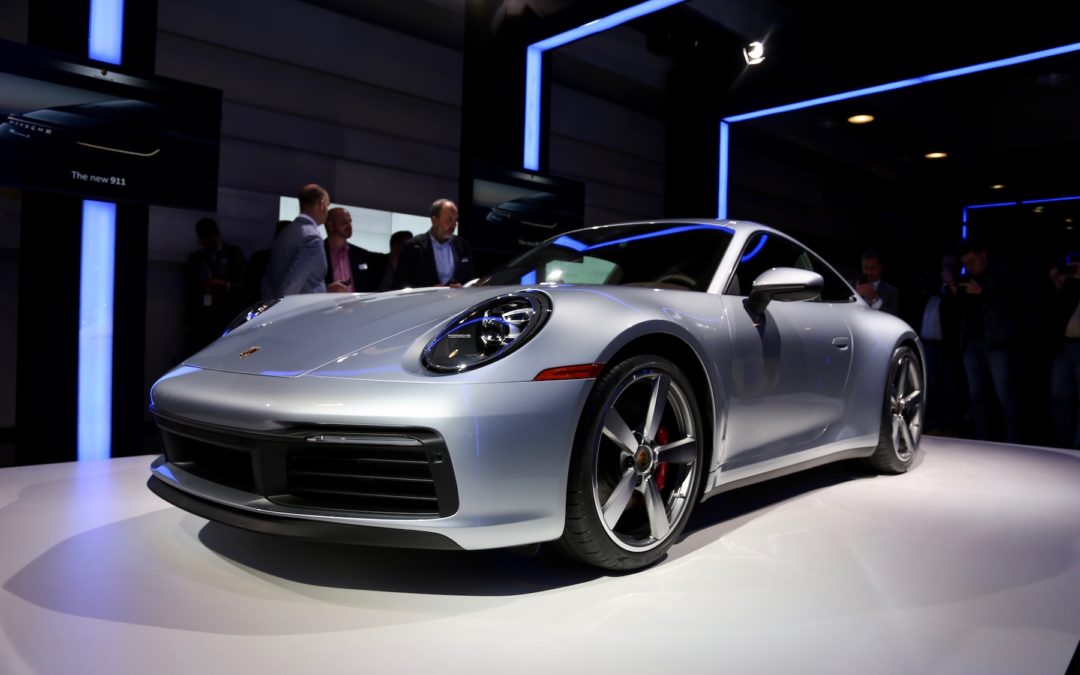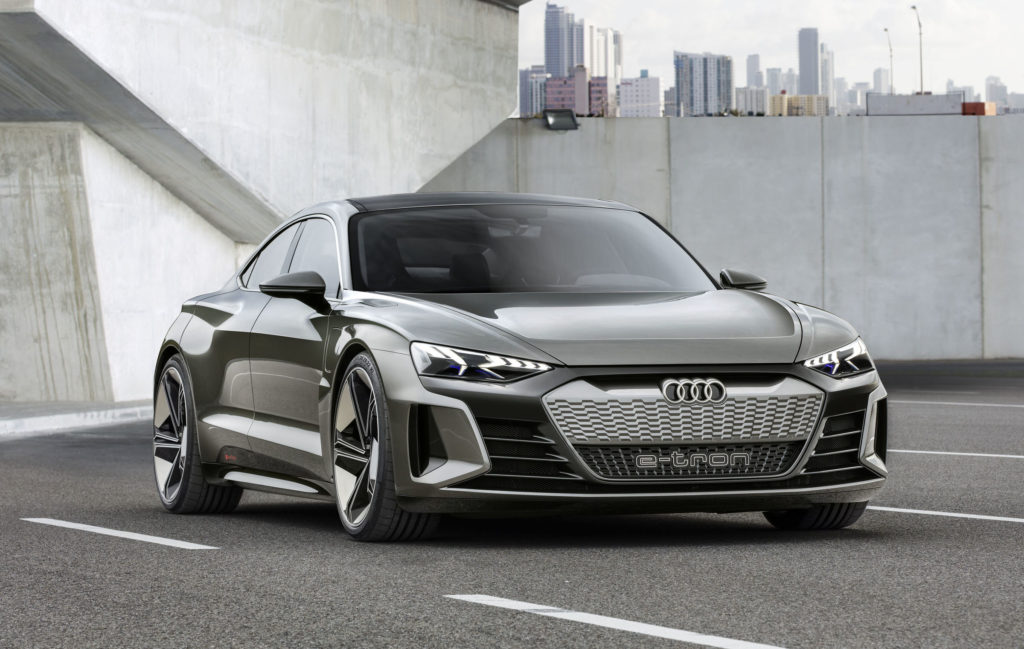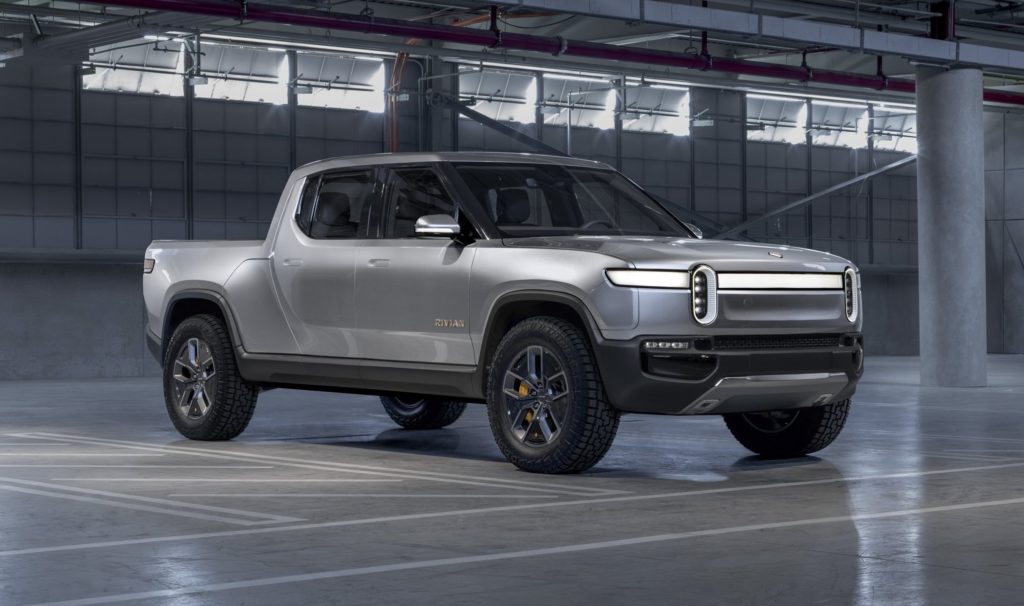This year’s LA Auto Show is packed with high profile reveals and a few fun surprises. As expected, electric vehicles are making a bigger impression than ever before, but even traditional gas-powered cars are rocking seriously cool tech alongside fresh styling.
We’ve picked through the long list of big debuts to recap five models — some production-bound, some still in concept form — that leave us excited for the next few years of driving.
2020 Porsche 911
The Porsche 911 is perhaps the most iconic sports car in history, so the introduction of a new generation is accompanied by palpable excitement. The eighth installment of Porsche’s hero car may look like a small evolution from the outside, but hidden beneath curvaceous body panels is a slew of innovative technologies and performance goodies.
In Los Angeles, Porsche showed off its rear-drive and all-wheel drive S-badged models, which utilize a 3.0-liter flat-six engine to produce 443 horsepower and 390 pound-feet of torque. The sprint to 60 mph will take just 3.5 seconds (3.4s for 4S versions) and VMAX will be 190 mph. An eight-speed dual-clutch automatic transmission is the only available gearbox for now, but base models will be offered with a seven-speed manual.
The new 992 generation Carrera remains instantly recognizable, though its body has been tweaked here and there to both advance the marque and help purists reminisce about classic 911 cues. A creased hood and squared-off nose fall in line with the latest 718 Cayman and Boxster, while a light bar-connected taillight sequence, redesigned engine vents, and a remolded lower bumper are new distinctions.
Inside, the 911 takes a big leap forward, with a massive 10.9-inch infotainment and a pair of digital driver gauges to bookend an analog tachometer. The center stack features much more piano black coating and touch-sensitive controls than the 991’s button-heavy setup. Other innovations include a wet weather detector that changes the car’s driving behavior if sufficient water buildup occurs in the wheel wells and an advanced night vision mode.
2020 Jeep Gladiator
It’s been 16 years since Jeep built a pickup truck, so you’d better believe we were pumped for the debut of the Jeep Gladiator. While based on the Jeep Wrangler, the Gladiator is far more than just a Wrangler with an open bed. This midsize truck is packed with unique details that will satisfy hardcore off-roaders and suburbanites alike.
Up front, styling largely mirrors the Wrangler, but the grille slats have been widened slightly to better cool the engine. In profile, the four door-only Gladiator looks massive, but that’s because we’re used to seeing enclosed Jeeps. In reality, the truck’s 5-foot bed is on the smaller end of its segment, with most rivals offering configurations with larger cubbies. Buyers will have a choice of removable hardtop or soft-top bodies and bed covers.
At launch, the Gladiator will come with just one engine: a 3.6-liter V6 making 285hp and 260 lb-ft of torque mated to a six-speed manual or optional eight-speed automatic. Down the road, Jeep will add a 3.0-liter turbodiesel with 260hp and 443 lb-ft of torque. Properly equipped, the Gladiator can tow 7,650 pounds and haul 1,600 pounds.
Inside, the Gladiator looks similar to the Wrangler, with a large touchscreen infotainment and cool styling bits, but it also features lockable storage bins under the second row. Jeep will offer the Gladiator in Sport, Sport S, Overland, and Rubicon trims when it goes on sale in late 2019.
2019 Mazda 3
Mazda has been steadily improving the quality of its products for the past few years, but the Japanese automaker still trails its rivals in terms of outright sales. With the introduction of the all-new Mazda 3, the company may well be on its way to volume success.
Debuting in both hatchback and sedan form, the 2019 Mazda 3 is easily one of the most attractive mainstream compact vehicles we’ve ever seen. While both vehicles are effortlessly beautiful in a way only high-end luxury marques seem to accomplish, the Mazda 3 sedan is truly spectacular. Longer and more elegant than its predecessor, the four-door is upscale and eye-catching. The hatch, too, is striking, though not everyone will love its egg-shaped rear end. Unique, certainly, but with such a large C-pillar, rear passengers will have a tough time getting into the cabin and drivers will have a significant blind spot to overcome.
Practicality foibles aside, the new Mazda 3 kicks serious butt in the content department. 1.5-liter, 2.0-liter, and 2.5-liter versions of Mazda’s SkyActiv-G gasoline engine will be available. More intriguing, though, is the introduction of the company’s SkyActiv-X engine, which uses lean combustion and compression ignition technology to improve fuel economy without sacrificing power or reliability. The SkyActiv-X engine is assisted by Mazda’s M hybrid system, which appears in the 3 for the first time. Also appearing for the first time is an available all-wheel-drive system. Transmission options include a six-speed manual and six-speed automatic.
Audi e-tron GT Concept
The electric vehicle game is heating up quick, and while Audi was among the first luxury brands to preview an electric model way back in 2009, the German automaker has yet to put a vehicle into production.
Next year, the e-tron will become Audi’s first all-electric model, taking the form of a compact SUV to rival Jaguar’s I-Pace. It makes sense that Audi will hit the most popular vehicle segment first, but the brand isn’t stopping there. In LA, Audi took the wraps off its e-tron GT concept — a production-bound EV sedan with a striking design and cutting-edge tech.
Audi says its e-tron GT is close to road-ready, which means its angular body likely won’t change much, save for a few details. The tech sound production-spec too: based on the Porsche Taycan’s platform, the e-tron GT will use a 96-kWh lithium-ion battery pack and two electric motors to produce 590 hp. With a range of approximately 250 miles, the GT won’t match Tesla’s Model S P100, but it will rival the Tesla’s charging rate of 80 percent refill in under 30 minutes.
Rivian R1T Pickup
One of the most delightful surprises of this year’s LA Auto Show was Rivian’s R1T and R1S electric utility vehicles. The EV startup opted not to debut a luxury sedan or compact crossover like its key rivals but instead showed off a midsize pickup and a large SUV. Of the two, the R1T pickup really caught our eye.
The R1T boasts a massive 180 kWh battery that’s good for 400 miles of range. When the truck launches in 2020, it will also be available with 105-kWh and 135-kWh battery-pack options, with 230 miles and 300 miles of range, respectively. If you pick the middleweight battery, you’ll have access to the R1T’s incredible acceleration: 0 to 60 mph takes just 3.0 seconds. In a pickup truck, that figure is unheard of.
Similar in size to midsize pickup trucks like the Toyota Tacoma, the R1T is built on what Rivian calls a “skateboard” chassis. All mechanical components are housed in the chassis, which then has different bodies placed on top to make different vehicles. An electric motor at each wheel gives the R1T all-wheel drive, and an air suspension can raise the truck to provide more clearance off-road. Thanks in part to its sophisticated powertrain, the R1T can wade through up to 3.2 feet of water.
Pricing will start at $69,000 for the 180 kWh version (before the $7,500 federal tax credit). Like Tesla with its Model 3, Rivian is accepting refundable $1,000 deposits right now.



